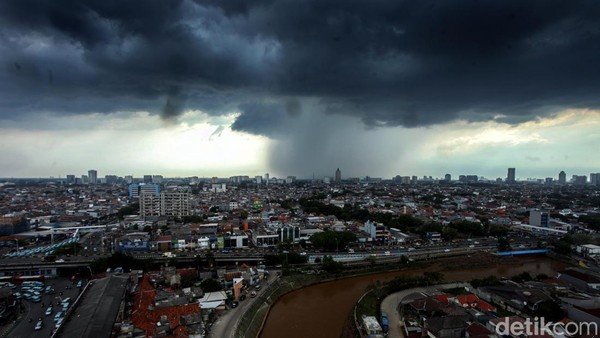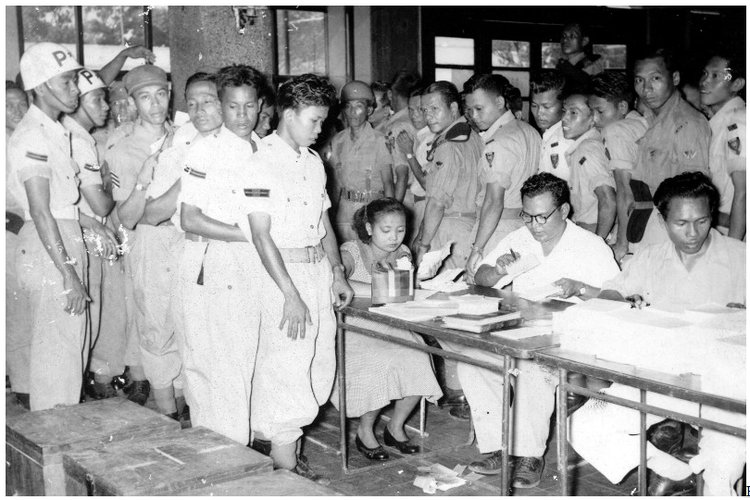
Curious about the weather in Maritengngae? The climate here features a tropical pattern, bringing warm temperatures and seasonal rains. Knowing the cuaca kecamatan maritengngae can help you plan your day, whether it’s for outdoor adventures or daily activities.
This area experiences wet and dry seasons, each with its own charm. The lush landscapes thrive during rainy months, while dry spells offer sunny skies perfect for exploration. Keep an eye on local forecasts to make the most of your time in this vibrant region.
“`html
Cuaca Kecamatan Maritengngae: A Deep Dive into Weather Patterns
Kecamatan Maritengngae, located in the beautiful region of South Sulawesi, Indonesia, showcases a unique weather pattern that significantly affects the local environment, agriculture, and lifestyle. Understanding the weather in this area is essential for residents, farmers, and tourists alike. In this article, we will explore various aspects of ‘cuaca kecamatan maritengngae’ in greater detail, aiming to provide a comprehensive understanding of its climatic conditions.
Overview of the Climate in Kecamatan Maritengngae
The climate in Kecamatan Maritengngae can be classified as tropical, characterized by distinct wet and dry seasons. This tropical climate influences the daily lives of its residents and shapes the local ecosystem.
Temperature Patterns
– The temperature in Maritengngae generally ranges between 24°C to 32°C throughout the year.
– The hottest months are typically between October to December, with average temperatures peaking at around 32°C.
– The coolest months are usually June to August, where temperatures can drop to around 24°C during the night.
Understanding these temperature patterns helps locals plan their daily activities, agricultural practices, and clothing choices.
Rainfall Statistics
Rainfall in Kecamatan Maritengngae plays a crucial role in the region’s agriculture and water supply. The patterns of rainfall are as follows:
– **Wet Season**: November to March sees heavy rainfall, with January often being the wettest month.
– **Dry Season**: April to October tends to be drier, with occasional light rains.
Here’s a simplified table showing the average monthly rainfall in millimeters:
| Month | Average Rainfall (mm) |
|---|---|
| January | 300 |
| February | 250 |
| March | 200 |
| April | 100 |
| May | 75 |
| June | 50 |
| July | 40 |
| August | 45 |
| September | 60 |
| October | 90 |
| November | 210 |
| December | 320 |
This statistical overview allows residents and farmers to strategize their planting and harvesting cycles accurately.
Seasonal Changes in Maritengngae
The residents of Kecamatan Maritengngae experience two primary seasons: the wet season and the dry season, each influencing the local ecosystem and lifestyle.
The Wet Season
During the wet season, heavy rainfalls are frequent. This season brings several impacts:
– **Agriculture**: Farmers prepare for high yields due to the ample rain, vital for rice and other crops.
– **Transportation**: Roads can become muddy and challenging to navigate, leading to delays in transportation.
– **Flooding Risks**: Some areas may experience temporary flooding, necessitating emergency preparedness.
The Dry Season
The dry season offers a contrasting environment:
– **Agriculture**: Farmers often rely on irrigation systems as natural water sources dwindle.
– **Festivals and Events**: Many cultural festivals occur during this time since the weather supports outdoor activities.
– **Tourism**: Dry weather attracts tourists eager to explore the region’s natural beauty.
These seasonal changes highlight the importance of adaptability for both agriculture and local economies.
Impact of Climate Change on Local Weather
Climate change affects weather patterns globally, and Kecamatan Maritengngae is no exception. Locals have observed several changes, which include:
– **Unpredictable Rainfall**: Rainfall patterns have become less predictable, making it difficult for farmers to plan.
– **Rising Temperatures**: Some months have seen an increase in average temperatures, affecting crop yields and livestock health.
– **Extreme Weather Events**: There is an increasing frequency of extreme weather conditions, such as prolonged heavy rains or droughts.
The community is becoming more aware of these changes and actively seeks solutions to adapt to the shifting climate.
Weather-Related Activities for Residents
Understanding ‘cuaca kecamatan maritengngae’ allows residents to engage in various activities that enhance their quality of life. Here are some popular weather-related activities:
Agriculture
Farmers time their planting and harvesting based on rainfall and temperature forecasts. Some key crops include:
– Rice
– Corn
– Cassava
– Various fruits and vegetables
Planning these activities aligns with the seasonal weather patterns, promoting better yields.
Outdoor Events and Festivals
Local communities often organize festivals during the dry season. Some of the notable events include:
– Cultural festivals showcasing traditional dance and music.
– Harvest festivals celebrating the agricultural season.
– Sports tournaments taking advantage of the dry, pleasant weather.
These events strengthen community bonds and celebrate the local culture.
Tourism Opportunities
Tourists flock to Kecamatan Maritengngae to experience its natural beauty. Weather plays a significant role in tourism, and activities include:
– Hiking and exploring the lush landscapes, especially post-rain.
– Beach activities during the dry season, with plenty of sunshine.
– Eco-tourism opportunities, highlighting the unique flora and fauna in the region.
Tourism provides a significant economic boost, relying on the understanding of weather patterns.
Preparing for Extreme Weather Events
As climate change influences weather patterns, the community needs to prepare for extreme weather conditions. Here are some strategies:
Community Awareness Programs
Local authorities can initiate educational programs to inform residents about:
– Recognizing early signs of extreme weather.
– Preparing emergency kits with essential supplies.
– Forming community response teams to address emergencies.
Infrastructure Improvements
Investing in better infrastructure helps mitigate weather-related challenges:
– Building improved drainage systems to prevent flooding.
– Creating safe shelters for residents during severe weather events.
– Ensuring access to roads and transportation even during the wet season.
Partnership with Meteorological Services
Collaborating with meteorological services can keep the community informed about weather forecasts, helping residents make timely decisions.
Understanding ‘cuaca kecamatan maritengngae’ provides valuable insights into the weather patterns that shape the lives of its residents. From agriculture to tourism, the climate plays a vital role in daily activities. Recognizing seasonal changes, preparing for extreme weather, and adapting to climate shifts will empower the community to thrive in harmony with their environment.
“`
SEJUMLAH RUMAH WARGA DI SIDRAP RUSAK AKIBAT CUACA EKSTREM
Frequently Asked Questions
“`html
What is the typical climate in Kecamatan Maritengngae throughout the year?
Kecamatan Maritengngae experiences a tropical climate characterized by high humidity and temperature fluctuations throughout the year. The region generally has two main seasons: a wet season from November to March and a dry season from April to October. During the wet season, rainfall is frequent and can be heavy, while the dry season tends to have less precipitation and sunnier days. Average temperatures usually range from 24°C to 32°C (75°F to 90°F) year-round.
How does the weather in Kecamatan Maritengngae affect agriculture?
The weather in Kecamatan Maritengngae plays a significant role in agricultural practices. The wet season provides essential rainfall for crops, enabling farmers to cultivate rice, corn, and various vegetables. However, excessive rain can lead to flooding and crop damage. In contrast, the dry season allows for harvesting and planting of drought-resistant crops. Farmers often adjust their planting schedules based on weather patterns to optimize yield.
What natural phenomena can impact the weather in Kecamatan Maritengngae?
Kecamatan Maritengngae can experience several natural phenomena that affect its weather. Occasional tropical storms or cyclones may bring heavy rainfall and strong winds during the wet season. Additionally, the area is susceptible to El Niño and La Niña events, which can lead to unusual weather patterns, including droughts or excessive rainfall. Local meteorological services monitor these phenomena to provide forecasts and warnings.
How can residents prepare for severe weather conditions in Kecamatan Maritengngae?
Residents can take several precautions to prepare for severe weather conditions in Kecamatan Maritengngae. Staying informed about weather forecasts through local news or radio stations is crucial. Securing homes against strong winds and floods, having emergency kits ready, and creating evacuation plans are essential steps. Additionally, communities often organize preparedness workshops to educate residents on how to respond to severe weather events effectively.
What are the best months to visit Kecamatan Maritengngae for pleasant weather?
The best months to visit Kecamatan Maritengngae for pleasant weather are typically from April to October. During this period, the region experiences drier conditions with less rainfall and more sunshine, making it ideal for outdoor activities and exploring the area. Travelers should keep in mind that temperatures can still be quite warm, so staying hydrated and seeking shade is advisable.
“`
Final Thoughts
In conclusion, understanding the cuaca kecamatan maritengngae is essential for residents and visitors alike. The area’s climate significantly impacts agricultural practices and daily activities. By staying informed about local weather patterns, people can better prepare for seasonal changes. This knowledge enhances the overall quality of life in the region and promotes smarter decision-making.




